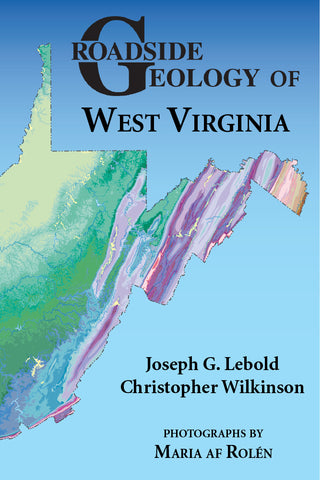Roadside Geology of West Virginia
Joseph G. Lebold and Christopher Wilkinson
Photographs by Maria af Rolén
"...It is a book that will provide hours of enjoyment for anyone with an interest in the geology and/or natural history of West Virginia. Along the way you are sure to learn a great deal about the geological history of the region. In short, this is an excellent book!"–Richard S. Rodgers, Tundraco
Within West Virginia’s irregular borders, formed by winding rivers, high ridges, and the peculiarities of colonial land surveys, is a sedimentary record of the entire Paleozoic Era. Continents colliding along the eastern coast of North America built huge mountains that shed sediment into a shallow inland sea to the west. Thick wedges of sandstone, shale, and limestone piled up, all folded by later collisions to the east. In West Virginia’s Valley and Ridge Province, resistant, tilted sandstones form long ridges that parallel the fold axes, while less folded rock forms the horizontal layers of the Appalachian Plateaus to the west. From Harpers Ferry at the edge of the Blue Ridge through the Allegheny Mountains west to the Ohio River valley, sedimentary rock thickens and thins, hiding valuable layers of coal and reservoirs of oil and gas. Authors Joseph Lebold and Christopher Wilkinson lead you along roads through the Mountain State, past roadcuts exposing contorted rock layers, coral reefs, and ancient red soils. Sidebars provide more details about iconic places such as the New River Gorge, Seneca Rocks, and Dolly Sods, and about unusual geologic features such as the riverless Teays Valley and the karst topography and caverns of the Big Levels.
310 pages, 6 x 9, paper
Item 202, ISBN 978-0-87842-683-6
Geological Society of America
-
Sale
- Regular price $26.00

